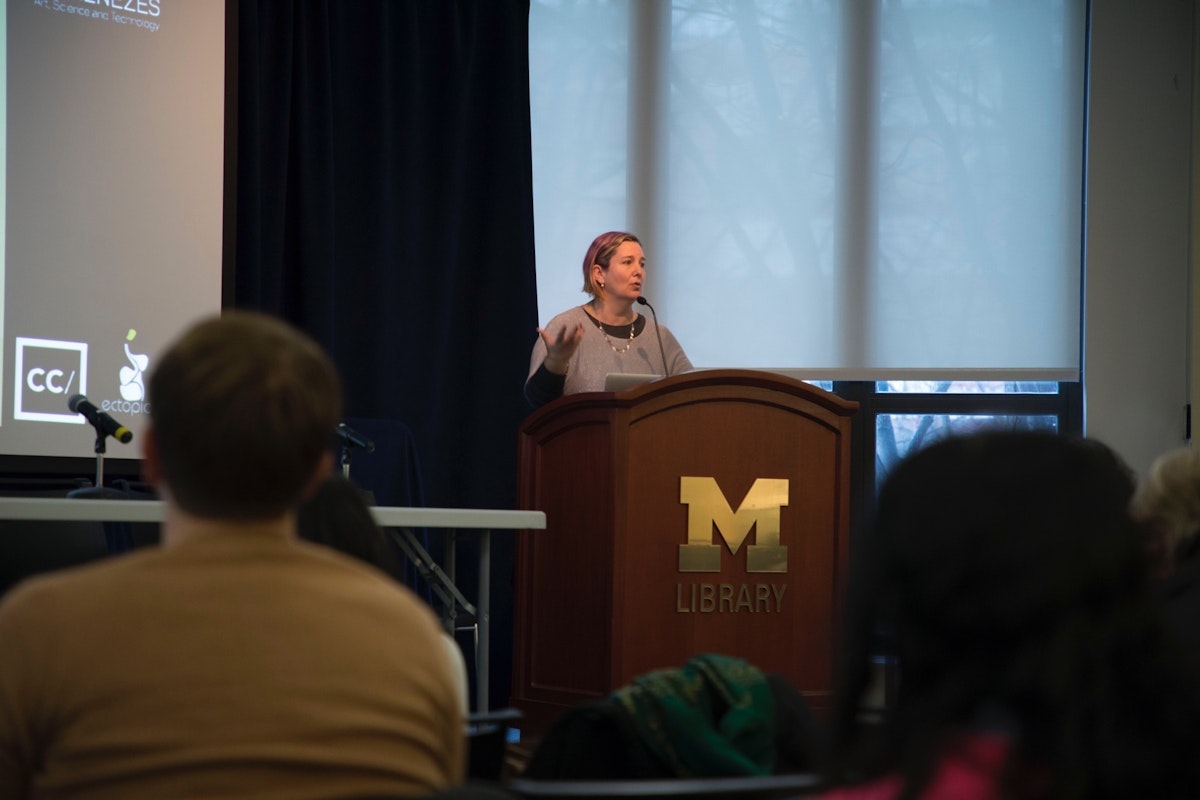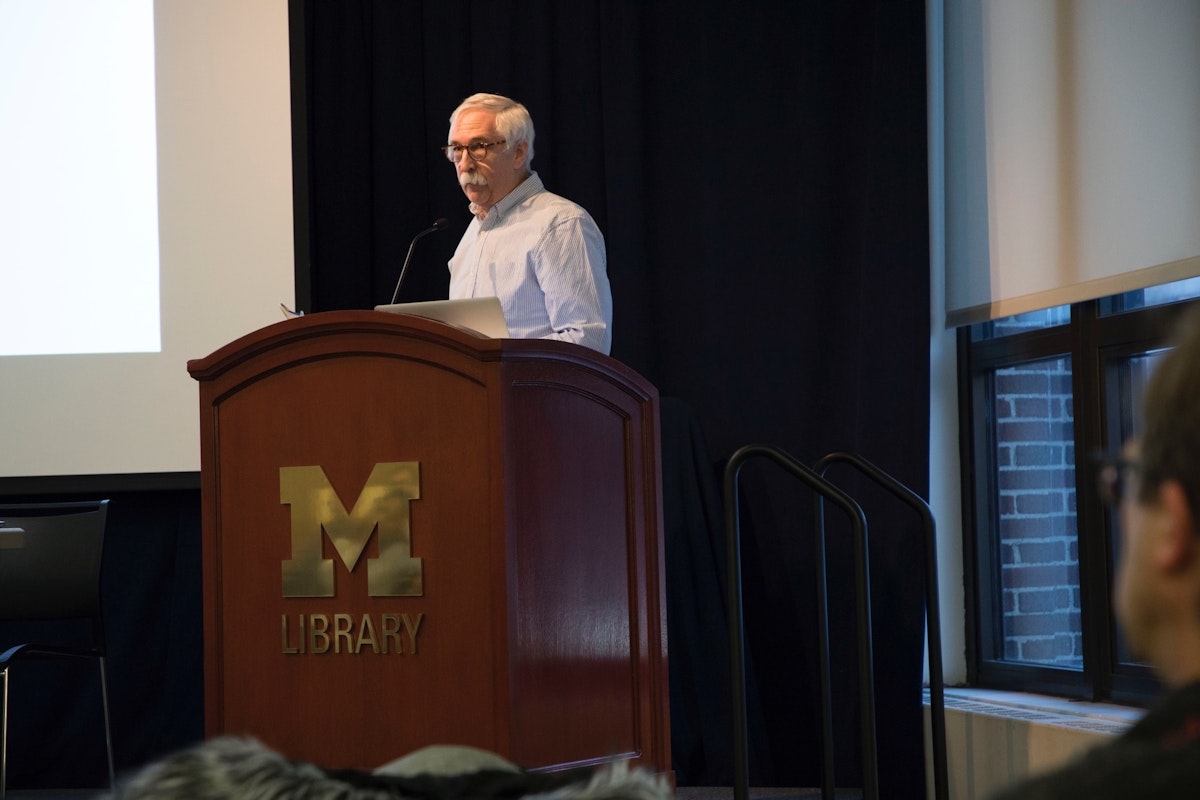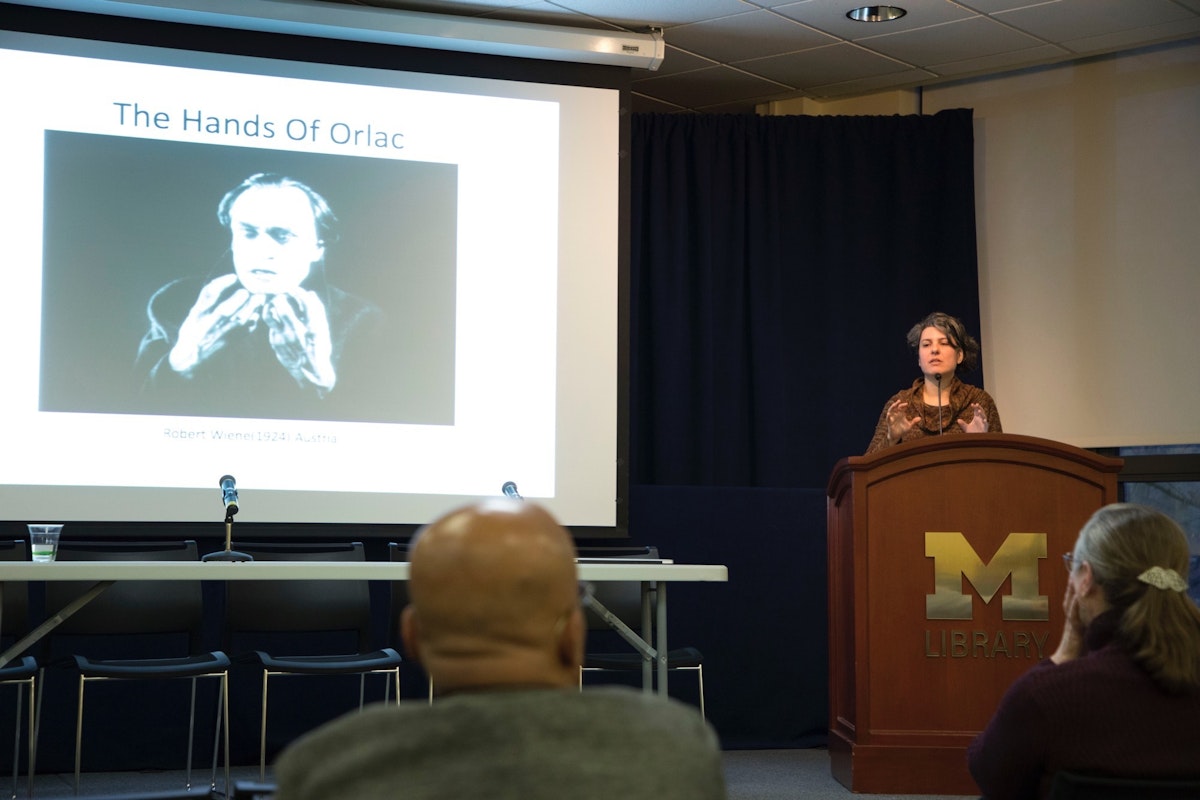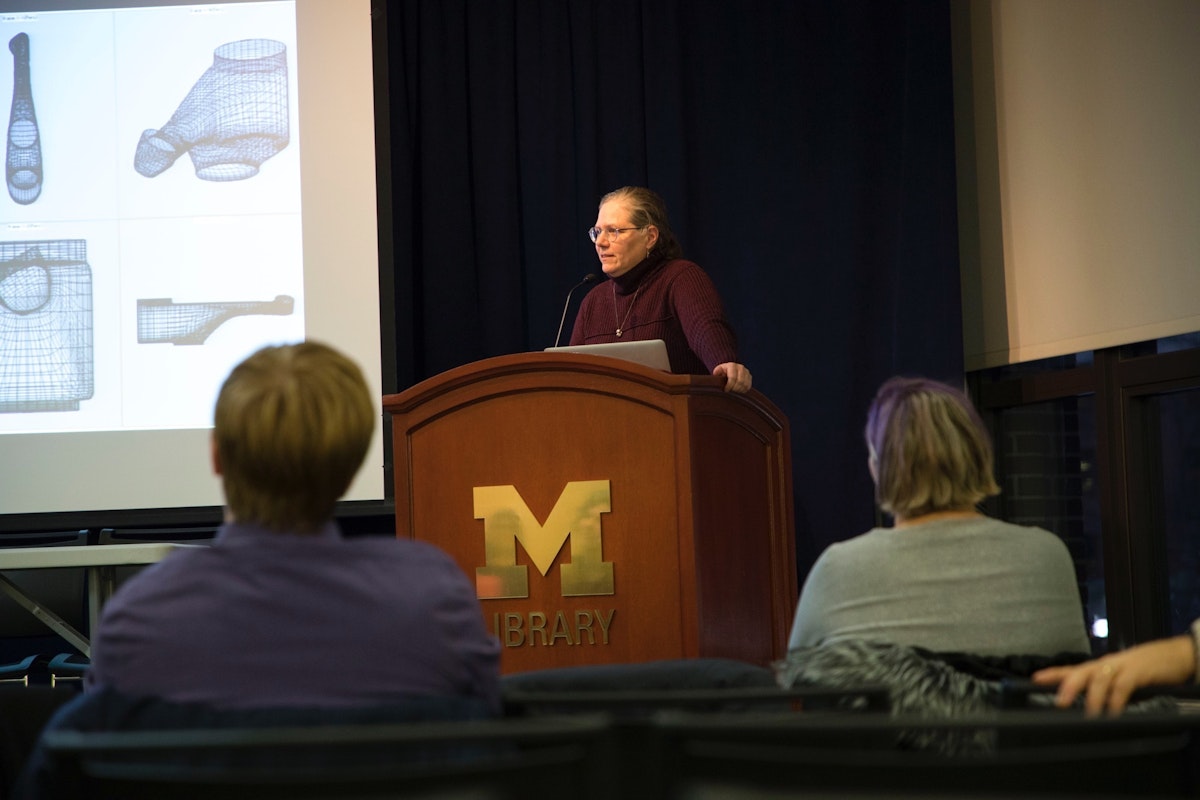Imagin(in)g Biologies
As a pioneering bio-artist and artistic director of an experimental art lab and research-based arts organization, Marta de Menezes gets a lot of questions about creating art from living things. Some from herself ("Am I entitled to do this?") and some from others ("Why not just do that in Photoshop?").
The Portuguese artist joined visiting artist and professor Dalila Honorato, of Greece, and Stamps School of Art & Design professors Brad Smith and Elona Van Gent on January 17, 2018 for a panel discussion about these kinds of questions and others raised by artistic representations — and explorations — of biology.
"I empathize with both Dr. Frankenstein and the monster," Menezes told the audience inside the Hatcher Library Gallery.
Touching on topics of cell manipulation, immunology, embryonic imaging, surgical remains, and notions of the biologically grotesque and monstrous, “Imagin(in)g Biologies" was hosted by the Stamps School and highlighted the artistic, cultural, and scientific implications of each artist's work, as well as the commonalities between four very different approaches to these subjects.

Before the group session led by Stamps Gallery Director Srimoyee Mitra, each panelist gave a brief overview of the concepts and methodologies behind their recent and current work.
In her 2014 work "Immortality for Two," Marta de Menezes and her immunologist partner altered white blood cell samples taken from each other to create "immortal" cells that could live outside the body by introducing a virus vector to them. (Altering the cells this way also made them cancerous, so working on her own cells was too risky, she explained; it would be easy to contaminate her own body with cancerous versions of her own cells.) Since white blood cells make up the immune system, Menezes said the two strains could each live forever but never together, since mixing the two would make them attack each other. The only way they exist together is on exhibit, when the overlapping image of each is projected from a microscope onto a table.

For an upcoming exhibit in Edinburgh, de Menezes, who says the one common theme of all her work is personal identity, will create an "Anti-Marta" by having a small patch of her partner's skin grafted to her own. Since skin grafts between two individuals have a very high failure rate, de Menezes expects to collect and stain the rejecting antibodies and display them.
As a research professor in radiology, Brad Smith explained how the MRI depictions of human embryos he creates originate as a technological view of a specimen for clinical purposes. But when reformatted into a flat, two-dimensional kind of cross-section, or digital "paper doll," they start to resemble embryonic totems, like the ones found in the Olmec culture of ancient Mexico.

With a series of slides on the history, aesthetics, phobias, and fetishes associated with prosthetics and surgically removed body parts, Dalila Honorato raised questions about how one is changed by, and can heal from, losing a physical piece of themselves.

Detailing her personal journey, Honorato shared the thought process behind her decision to preserve removed tissue from a surgery she underwent in the form of jewelry to "create a talisman of the part that has been problematic."
With a more whimsical approach to the idea of "imagined biologies," Elona Van Gent shared her love of making monsters, whether sculpted in bronze or computer animated. Working digitally, Van Gent keeps an endless inventory of physical attributes and abnormalities on file to combine in various playful and horrible ways.

But not everything is for fun. Van Gent has been working on a series of decorative patterns using monsters to depict complex social problems. She plans to decorate mundane, household objects with these patterns as a way to explore the simultaneous urgency and impotence, empathy and detachment these problems can present people with.
Stamps Dean Guna Nadarajan invited Honorato and de Menezes to campus when he saw the two were traveling the U.S. and Canada together giving lectures and workshops. The visit was de Menezes' second to U-M; she led a workshop at Stamps on bio-art and using gene manipulation techniques last spring.
Nadarajan said discussions like these help Stamps engage other schools and departments within the university, and he hoped participants gained a better understanding of how our notions of biology are experienced and can be understood by the images we create.
"The conversation about art and biology is a relatively recent one, and as a leading art and design school with a strong focus on interdisciplinarity, the Stamps school should continue to be a platform for discussing the possibilities and challenges in this emerging area," Nadarajan said.
Attendee Eloise Janssen (Stamps BFA '22) had researched several artists who meld art with other fields of study, but she said the talk gave her a rare opportunity to talk with some in person. Janssen's own work integrates her academic studies in anthropology. She was most interested to learn about the visual culture of the Olmec and surprised by de Menezes' plans to graft her partner's skin to her own as part of her work.
"I came to realize that there really is no way to define this collaboration of art and sciences' it is so unique and individual to each artist and their perspectives," Janssen said. "After hearing these artists speak, it made me think about how the line between art and other disciplines in the sciences is so thin, and how we as artist scan expand and explore even deeper into this relationship."